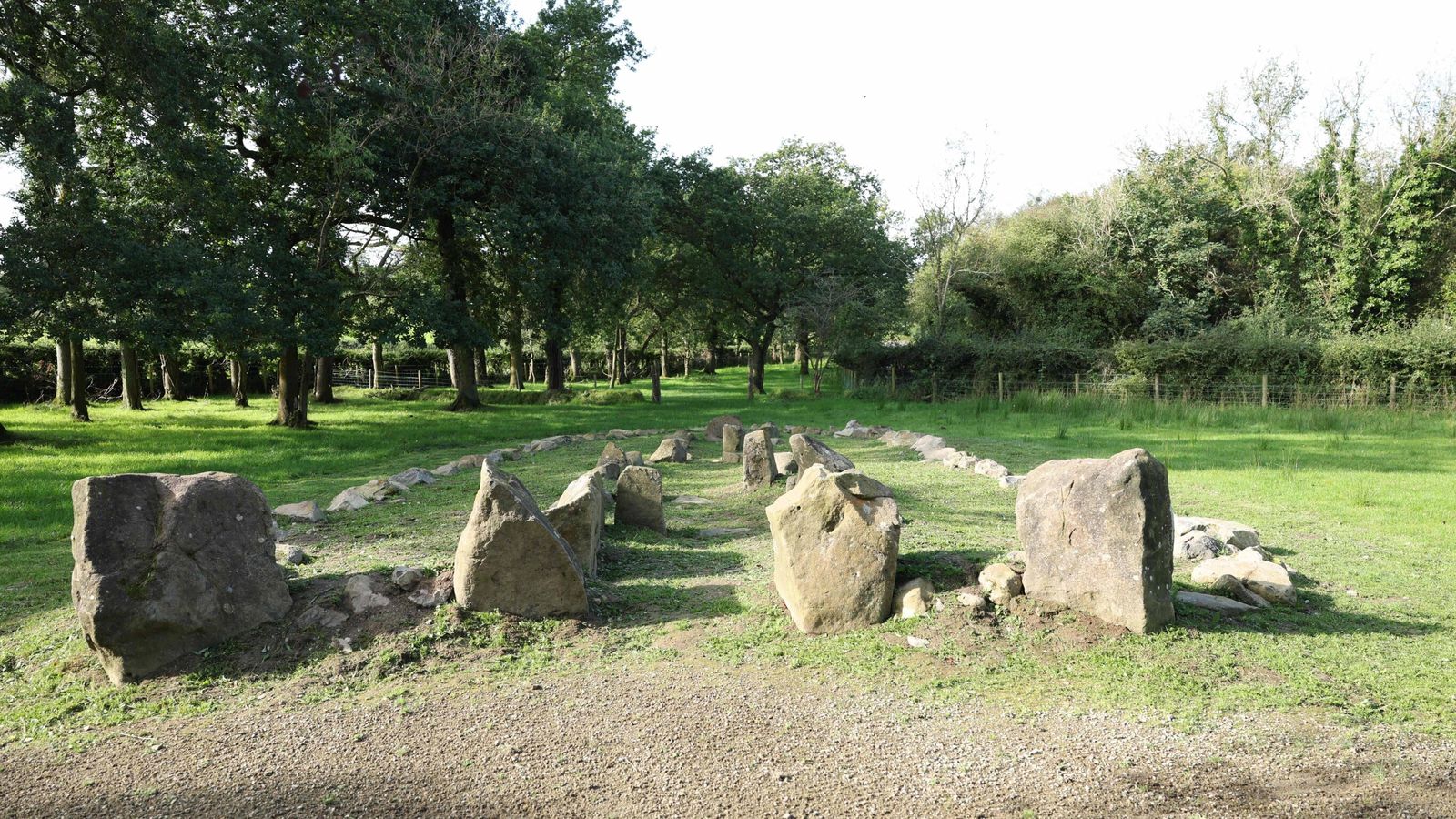A Neolithic tomb that predates the pyramids of Ancient Egypt has been put on permanent display at a museum in Northern Ireland.
It dates back more than 6,000 years and was discovered in Ballintaggart in Co Armagh.
The Ballintaggart Court Tomb is a series of upright stones with a semicircular courtyard shape at the entrance to the burial chambers where human remains would have been left and is one of about 400 of its type on the island.
It was dug up from its original location in 1966 after being put at risk from the expansion of a nearby quarry and taken to Ulster Museum.
Now the stones have been rehomed at Ulster Folk Museum where the structure has been recreated outside the attraction with the use of 3D modelling.
Dr Greer Ramsey, curator of archaeology at National Museums NI, said the large structures became more popular in the country as ancient people created permanent settlements.
“Court tombs take their name from a semicircular arc of upright stones marking the entrance to the burial chambers,” he said.
The UK’s largest lake has turned into ‘a toilet’ – and the ‘disaster is being ‘underplayed’
Northern Ireland: DUP wants ‘seismic’ offer from Downing Street to restore power-sharing at Stormont
Lough Neagh: Largest lake in UK and Ireland being poisoned by toxic algae
“The Neolithic period to which they belong was revolutionary as it marked the end to a nomadic or hunter-gatherer way of life.
“New settlers arrived about 6,000 years ago, bringing with them farming skills and many of the plants and domestic animals we are familiar with today.
“With a more secure food supply, people could live for longer in one place and invest in larger, more permanent structures, such as tombs.”
Read more:
Ancient hand axes found
Sphinx-like statue and shrine unearthed
Details revealed about life on the Roman frontier
William Blair, director of collections at National Museums NI, said: “It is a brilliant illustration of how the museum can connect Ulster’s unique heritage spanning thousands of years to the present day. We are grateful to our project partners for their input and support.”
The tomb’s arrival at the venue comes as Ulster Folk Museum revealed its investment plans which included widening access to its collection.
Visitors can see the structure outside in the rural section of the museum as part of a regular admission ticket.









